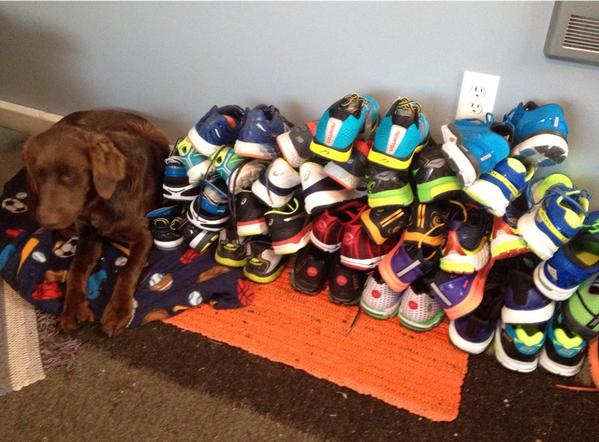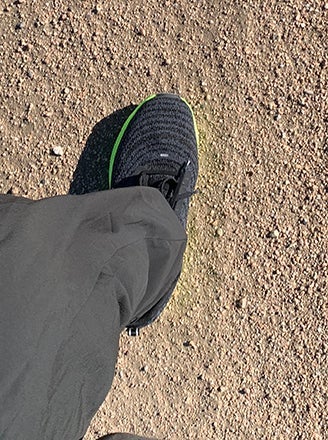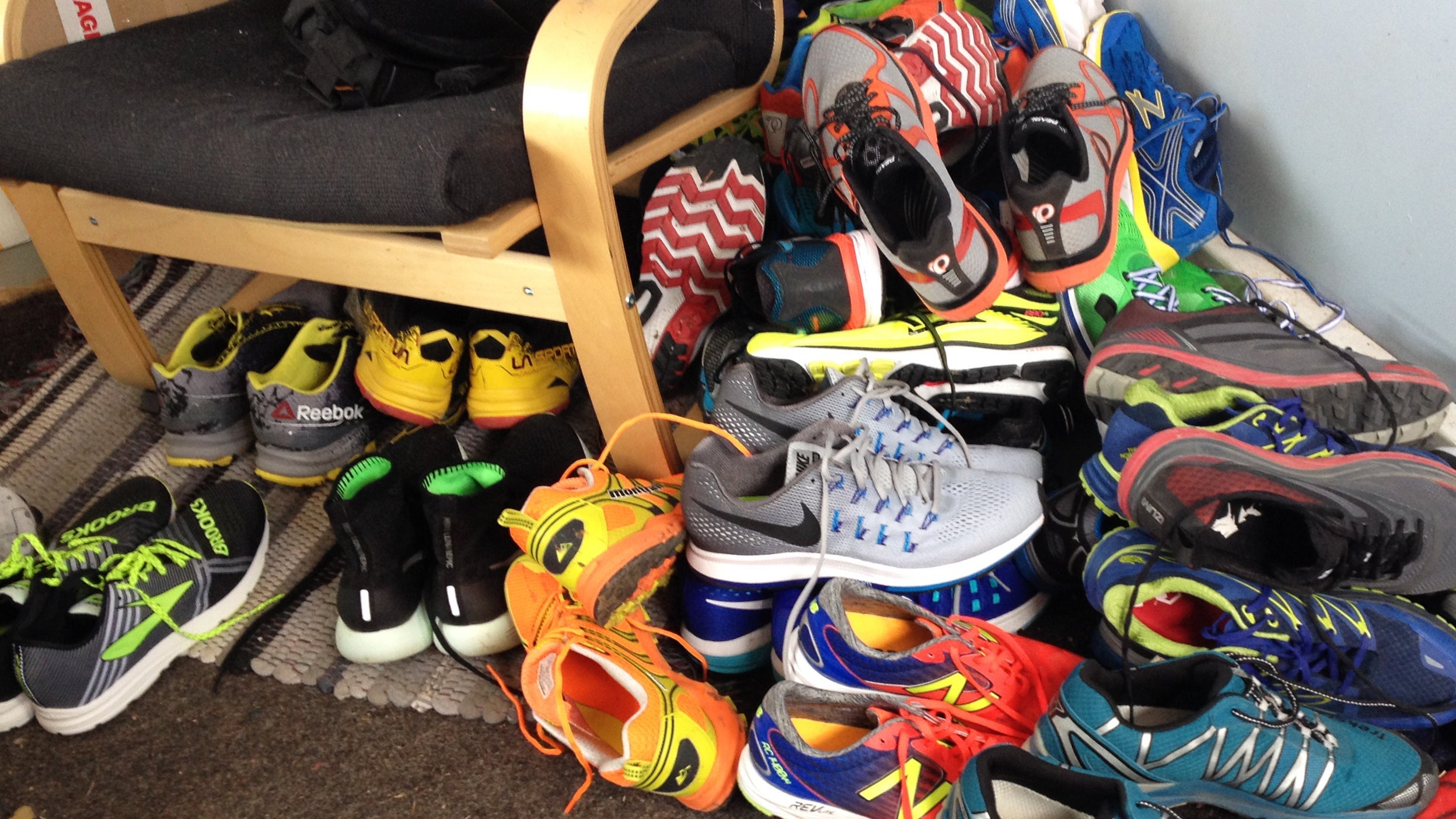I’ve been a running shoe geek since nearly the beginning of running shoes. For the first few decades of my running life—even though I often frequented bargain shelves and close-out sales—I still spent far too much money satisfying my curiosity for new models and pursuing the quest for the perfect match. Since 2000, however, I’ve been a running magazine editor or writer and have had the privilege of running in almost every new model of running shoe that comes out. After 20 years of having the UPS man show up at my door with new shoes multiple times a week, I still get excited about every new model, and have learned some important lessons about that search for the perfect pair.
Few wrong, some oh-so-right
I make a rule that I won’t write or edit a review about any shoe that I haven’t run at least four miles in. For most shoes, I put at least 20 miles on them, including one long run and one or more uptempo efforts. When you have to have to run in every shoe that comes out, conventional wisdom would assume that many would be uncomfortable, even dangerous.
The reality, however, is that there have been only one or two shoes a year for which I couldn’t wait for the run to end and which I never put on again. For the most part, I can run comfortably in almost any model. And, with the exception of a few poorly chosen trail shoes that weren’t suited for the terrain I was tackling, I can’t trace any injury to running in a certain shoe. I don’t think I’m unique: I’ve learned that as much as shoes differ in cushioning and stability and shape and ride, they get more credit than they deserve for uniquely protecting us and enhancing our runs. Our bodies are remarkably adaptable—and most of today’s shoes are perfectly adequate.

That said, while few shoes are wrong, some are oh-so-right. I can run comfortably and effectively in nearly any model, but some make the lights come on. They match the shape of my foot, holding it in complete comfort and security. I land softly and smoothly, just where I expect to land. My foot rolls as it wants to roll, with nothing impeding it or annoying it—yet it is also supported in just the right places with just the right level of cushion. When my weight rolls onto the ball of my foot the shoe surprises and delights me with the perfect blend of comfort and connected power—and before I know it, I’m launched forward, hardly noticing that I’ve touched the ground.
Biomechanical researcher Benno Nigg says this moment of comfort with a shoe comes when it allows me to run in my preferred movement path. When it happens, Nigg told me, “You are running in the Jonathan style”—and the shoe is supporting and staying out of the way of those personal patterns. Nigg also says that this “comfort filter” is the best way of choosing shoes, that the shoe that feels right is right, both for efficiency and injury-prevention.
What I want keeps changing
Even if I can run in most any shoe, given that a few choice models fill my runs with sunshine, the quest for a perfect shoe is both valid and worthwhile. Some shoes are just going to work better for each of our bodies’ shape and stride—even more so with today’s more tuned “energy-return” models.

But here’s the rub: What feels right changes from day to day, run to run. When you’ve got a pile of shoes to choose from for every run, as I have, it is rare that I run in the same model on consecutive days, even when I don’t have to test new ones.
Part of my fickleness is due to the differences in the specifics of the run itself. Distance, pace, surface, and weather all vary, and each combination requires a different shoe. Complicating the picture is how tired I am, physically and even emotionally, with each state of readiness leading me to another model. And sometimes I just want something different, like ordering something new in a restaurant. Even Nigg found this in his research, that people’s perception of comfort was not consistent or predictable.
The solution? Have multiple shoes. Find a few that feel better than the others—ideally models with different characteristics in terms of fit, cushioning, support, weight and propulsion—so that you have a choice when you head out the door. Not only will you feel better by matching your shoe to your run, but research shows you’re less likely to get injured by varying the load on your body.
If I Had to Choose, I’d go Versatile
That’s all well and good for someone with an office—and garage—full of free shoes to say. I know. So here’s something else I’ve learned from my wealth of options: If I had to choose one shoe to run in for the next few months, I’d choose one of today’s versatile stability models.
Shoe guides try to draw lines between categories like stability shoes, cushioned shoes, bouncy shoes and responsive shoes. But shoes exist on a continuum, now more than ever, and many of the models could have crossed over to other buckets.
One category that has been blurred these days is “stability.” Once the ghetto of heavy, controlling, often-ugly models, never to be visited by fortunate “neutral” runners, it is now full of many models with design elements that support without controlling, and only interact when needed.
I wouldn’t normally buy a stability shoe, but having run in many as a tester, I can report that many of these features—like the various guiderails, unique geometries, and denser layers—distract very little from the ride when I’m feeling fresh, and make me feel secure when I’m fatigued and beat up. In several cases, I’ve found that I like the “stable” model better every day, as the rails or firmer materials seem to reduce the squish and make the shoes more responsive (at least for my stride).
I’d still try to splurge for a light, go-fast model for speed days and races, but my mainstay shoe, the one I’d want to spend day after day with, would be a versatile, moderately-cushioned model with unobtrusive stability features. Fortunately, there are a lot of choices in this category, each with enough variability that one is going to fit your stride and—like the partner you want to spend your life with—not only be dependable and caring but also make every day bright and fun.


